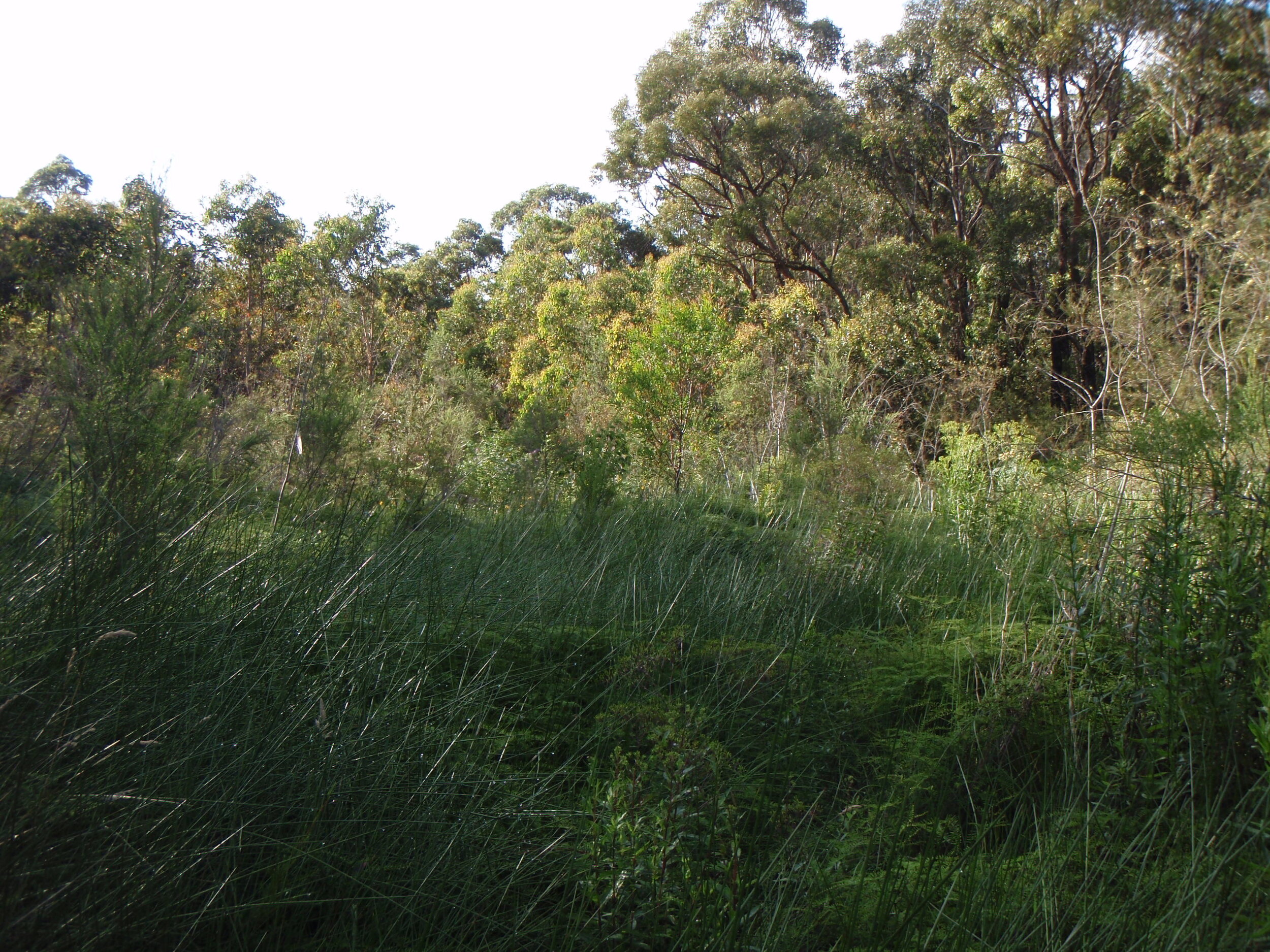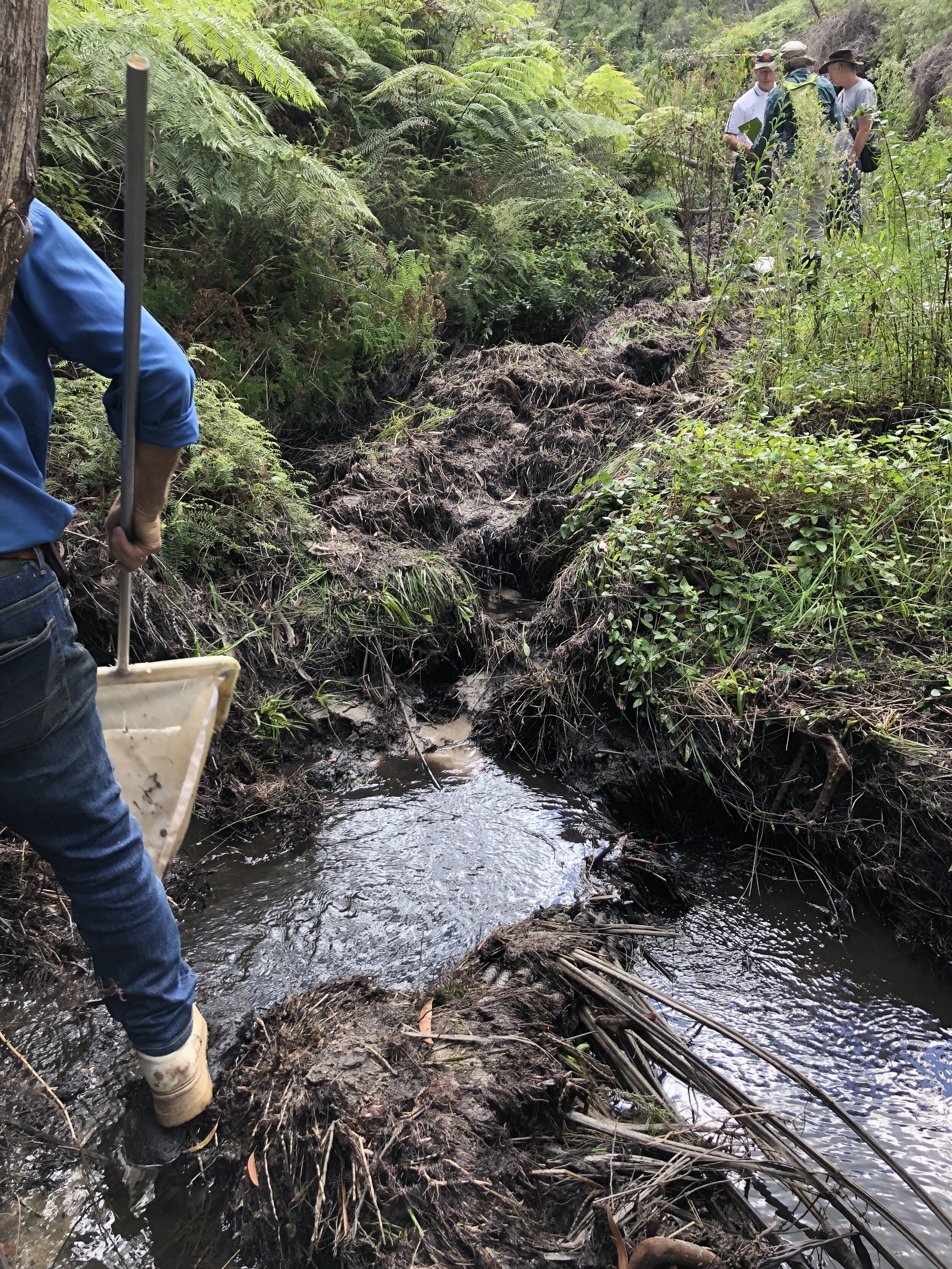An iconic Blue Mountains Swamp, home to the endangered Blue Mountains Water Skink and the Giant Dragonfly, is rapidly collapsing as a consequence of cost-cutting decisions made by the Roads and Traffic Authority in 2009.
The Swamp, in Bullaburra, has collapsed due to water run-off from the Great Western Highway. It has also been affected by contaminated water, as shown recently by the Blue Mountains World Heritage Institute’s Swamp Monitoring program.
Blue Mountains Mayor, Cr Mark Greenhill, said: “The government was warned – by Council’s environmental scientist and a swamp specialist – during planning for the highway expansion that diverting runoff into the top of the swamp would lead to its destruction.
“Alternative solutions were rejected at the time, on the grounds of cost.”
Above: the healthy intact swamp in 2009. Photo credits: Monica Nugent
Below: the collapsing swamp in March and April 2021. Photo credits: BMWHI
Blue Mountains Swamps are listed as endangered Threatened Ecological Community (TEC) under the Federal Environmental Protection and Biodiversity Conservation Act and vulnerable TEC under the NSW Biodiversity Conservation Act.
The sandstone-based peat swamps of the Blue Mountains are ancient ecological systems that serve critical ecosystem services including holding water in the landscape during wet periods, and then slowly releasing it into the environment during the drier periods of the year.
The recent floods saw significant channelisation of the Bullaburra swamp, and the peat layer that formed over many thousands of years was washed away by the massive volume of water flowing into he area.
“Unless something is done urgently, the swamp will cease to exist in a relatively short time frame,” Mayor Greenhill said. “Not only is the volume of the water a major issue, but the quality of that water is also leading to the degradation of the swamp’s unique vegetation.
“Swamps support several endangered species and their existence is vital for the maintenance of the rich biodiversity of our World Heritage Area. They also filter the water entering the Sydney water catchment, ensuring the high quality of Sydney’s drinking water.
“This is nothing short of tragic, as this could have been prevented.”
Monitoring of the swamp water carried out in recent weeks by Prof Ian Wright from the University of Western Sydney, in conjunction with the Blue Mountains World Heritage Institute’s Swamp Monitoring program, has shown that high levels of phosphorous and other trace elements leached from the concrete used in highway construction is making the swamp’s usually acidic water more alkaline.
Blue Mountains World Heritage Institute Executive Director, John Merson, said: “This has resulted in the swamp becoming weed-infested, severely impacting the native vegetation and wildlife that depends on its natural acidity. These include the rare and endangered Blue Mountains Skink and Giant Dragonfly, once commonly found in this swamp.
“The Blue Mountains World Heritage Institute’s swamp monitoring program has also found other concerns with the contamination of the water now flowing into the swamp.
“Unusually high levels of toxic contaminants have been found in the water coming into the Bullaburra swamp, which Prof Wright believes are due to the potash waste in the concrete used in construction of the highway and drainage system. These pollutants can accumulate in plants within the swamps and also have a negative impact on wildlife.”
Mayor Greenhill said: “Transport for NSW should be held accountable for rectifying the damage to this important Blue Mountains Swamp, caused by ignoring independent expert advice.
“This issue is also of significant concern elsewhere in our City. The NSW Government plans to extend the widening of the Great Western Highway from Katoomba to Mt Victoria with run-off from the highway likely to impact other endangered swamps systems, adjacent to and within the World Heritage Area, as well as in the special water catchment areas.
“The type of concrete used, and the management of the runoff, will need to be reviewed and changed if outcomes similar to those at the Bullaburra swamp are to be avoided in the further extension of the highway presently being planned.”
Transport for NSW, Council and the Blue Mountains World Heritage Institute are planning to meet to discuss the issue and possible ways forward.
Media enquiries:
BMCC Communications: mediaunit@bmcc.nsw.gov.au
BMWHI Media: media@bmwhi.org.au
Blue Mountains Mayor, Cr Mark Greenhill – 0414 195 990
BMWHI Executive Director, John Merson – 0412 290 840












